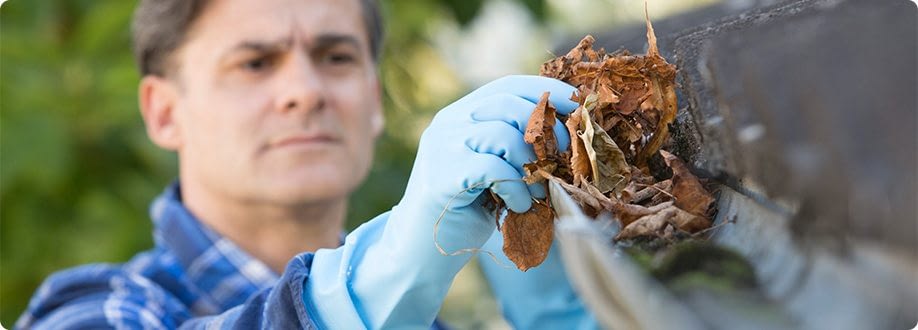

 The weather is holding…you still have more time to button up your house properly!
The weather is holding…you still have more time to button up your house properly!
After the Halloween candy has dwindled to the final unwanted packet of candy corn, thoughts begin to turn to winter. Fireside chats, holiday parties, and — you guessed it — snow. Lots and lots of snow. Most of you know how to keep Jack Frost from nipping at your nose, but what about your home?
Exterior endeavors
Maybe you avoid winter by escaping to your Arizona home six months out of the year, or maybe you live in Northern Minnesota and only see grass a couple months out of the year. Either way, you’ll need to know how to protect the outside of your property when old man winter decides to descend. Here are some timely tips:
- Get your mind into the gutter. It’s not fun, but it’s necessary to get your hands dirty and remove the sludge that’s worked its way into your gutters and downspouts. If they’re clogged with debris, they may not function properly, which can lead to water damage, loosened gutters, ice dams, and vermin. The National Center for Healthy Housing has some great tips on how to take care of both the interior and exterior of your home in every season.
- Raise the roof. Not literally, but it is a good idea to give it a detailed once-over to ensure that the roof flashing is intact and your chimney’s mortar is in good shape. But between slippery surfaces and low-hanging power lines, climbing atop your roof can be really dangerous. The Occupational Safety and Health Administration (OSHA) advises using a guardrail system and wearing appropriate gear (rubber-soled shoes and a harness) before taking on the task of maintaining your roof. And if you use a roof rake, make sure you take extra precautions.
- Trim the trees. Errant branches can damage your roof and gutters. Cut them back. But be aware OSHA recommends that all tree trimming or removal within 10 feet of a power line be done by a professional.
- Go beyond the windows. Doors, vents, fans, plumbing, air conditioners, electrical and gas lines, and mail chutes can all benefit from stripping and sealing. The Insurance Institute for Business and Home Safety recommends at least inspecting them all for leaks to help increase energy efficiency.
Some inside information
When the mercury dips, the exterior of your home might come to mind first. But what about the interior? From your furnace to your furniture, here’s what you need to know:
- Buy your home a winter coat. Heat rises, which means that all that warm and toasty air you want to keep in the living room could be trying to escape into the attic and out through the roof. Adding to the insulation in your attic’s floor will help keep heat from taking flight in the winter months. It will also help with other common household problems like outside noise, humidity, insects, dust, and pollen. The United States Department of Energy has helpful guidelines for the what, where, when, and how of all things insulation.
- Prep your pipes. Better to be safe than sorry — water damage repairs can cost a fortune. Frozen pipes burst easily, so make sure to insulate all accessible pipes before it gets cold.
- Fortify your furnace and fireplace. Beyond a detailed inspection, it’s also important to replace or clean furnace filters once a month during the heating season. Permanent filters reduce waste and hassle, and HEPA filter can remove up at least 99.7 percent of airborne particles. And every fireplace, woodstove, or space heater should also be inspected every year.
If you’re a snowbird…
If you’re fortunate enough to head to the beach during the winter months, it’s especially important for you to pay close attention to properly winterizing your home. Take a look at how to protect your vacant dwelling — from top to bottom — so that you remain a lucky duck, not a sitting one.
For more information
Visit Grinnell Mutual’s Loss Control Blog for more seasonal safety tips.
The information included in this publication was obtained from sources believed to be reliable, however Grinnell Mutual Reinsurance Company and its employees make no guarantee of results and assume no liability in connection with any training, materials, suggestions or information provided. It is the user’s responsibility to confirm compliance with any applicable local, state or federal regulations. Information obtained from or via Grinnell Mutual Reinsurance Company should not be used as the basis for legal advice or other advice, but should be confirmed with alternative sources.
10.16
Filed Under: Blog, Home Insurance

